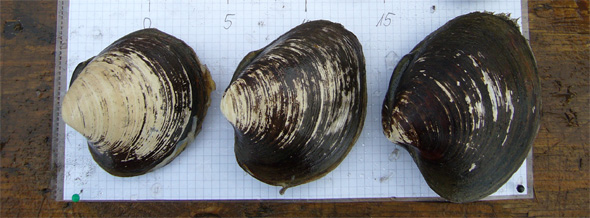February 27, 2014 | News | Picture Gallery
In search of longevity

Researchers want to find out how the ocean quahog is aging, compared to other organisms, and what factors influence the aging process. Do genes play a role, or are there other environmental factors involved? But in determining the ages of the ocean quahogs, simply sorting the animals by size is not sufficient, as the largest clams are not necessarily the oldest. To find out how old a given clam actually is, researchers have to examine it more closely. © MPIDR
The Arctica islandica, or ocean quahog, can survive to a very high age—up to 500 years. But in order to reach this age, the clam has to live in the Atlantic. If it grows in the Baltic Sea instead, its life expectancy is only around 40 years. Researchers at the MPIDR are trying to find out why this is the case.
The ocean quahog called “Ming” has become famous. In 2006, British researchers brought this clam up from the seafloor off the coast of Iceland and counted its age rings. They concluded that Ming had to be at least 405 years old. That discovery earned Ming a place in the Guinness Book of World Records; not just as the oldest mollusk, but as the oldest animal ever found.
Around six years later the scientists revised their findings: they had counted the age rings in Ming’s shell again and determined that the clam was 507 years old when they pulled it from the water—and that it might have grown much older.
Even assuming Ming is exceptional, it is clear that it belongs to a species of clam that can reach very advanced ages. Some other ocean quahog specimens have been found that lived several hundred years, but all of them grew in the Atlantic Ocean. Clams of this species that were found in the Baltic Sea, by contrast, only lived for a few decades. “The Iceland ocean quahog is a unique type of organism. We hope that we can learn much more about the aging processes of both humans and animals by gaining a better understanding of the factors that are responsible for these differences in life expectancy,” said project leader Ralf Schaible.